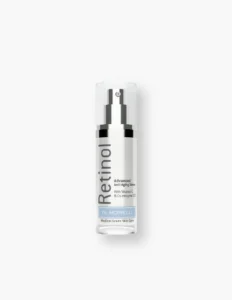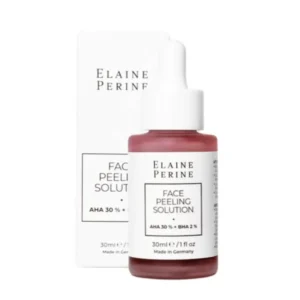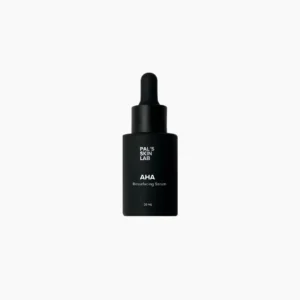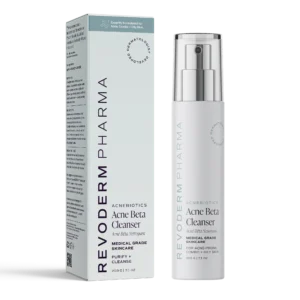Table of Contents
ToggleIntroduction:
In the realm of skincare, knowledge is power. Understanding the interactions between different skincare products is crucial. It can mean the difference between a glowing complexion and a skin disaster. Yet, the science of skincare can be complex.
It’s not just about which products you use, but also how and when you use them. Certain combinations can lead to skin reactions, reducing the health and beauty of your skin. This article aims to shed light on skincare products you shouldn’t mix!
We delve into the world of cosmetic chemistry to understand why some skincare products should not be mixed. Our focus is on the active ingredients that are commonly found in skincare products.
We explore how these ingredients interact with each other and how these interactions can affect your skin. Plus, we also discuss the role of pH levels in skincare and how it influences these interactions. Our goal is to help you make informed decisions about your skincare routine.
We want to help you avoid potential skin reactions and maintain the health and beauty of your skin. Whether you’re a skincare enthusiast, a beauty blogger, a dermatology patient, or a cosmetic chemist, this guide is for you.
We hope that by the end of this article, you’ll have a better understanding of your skincare products and how to use them safely and effectively. So, let’s dive in and explore the fascinating world of skincare product interactions.
Remember, your skin is unique, and what works for others may not work for you. Always listen to your skin and adjust your skincare routine accordingly.
Understanding Skincare Product Interactions
Skincare Products You Shouldn't Mix
Skincare is more than just applying products to your skin. It’s a science. Each product you use has a unique formulation. This formulation is a complex mix of active and inactive ingredients.
Active ingredients are the ones that directly affect your skin’s health and appearance. Inactive ingredients, on the other hand, support the delivery and preservation of the active ingredients. When you apply multiple products, these ingredients interact.
Sometimes, these interactions are beneficial. They can enhance the effectiveness of your skincare routine. But other times, they can lead to problems. Certain combinations can cause skin reactions.
They can also deactivate each other, reducing their effectiveness. Understanding these interactions is crucial for maintaining skin health. It’s also important for getting the most out of your skincare products.
In the following sections, we’ll delve deeper into the science behind these interactions. We’ll explore the role of cosmetic chemistry and pH levels in skincare. Plus, we’ll also discuss some common active ingredients and how they interact with each other.
So, let’s start with the basics: the science of cosmetic chemistry.
The Science of Cosmetic Chemistry
Skincare Products You Shouldn't Mix
Cosmetic chemistry is the science behind your skincare products. It’s about understanding how different ingredients interact with each other and with your skin. Each ingredient in a skincare product has a specific role.
Some provide hydration, others exfoliate, and some protect against sun damage. But these ingredients don’t work in isolation. When you apply a product, its ingredients interact with those of the other products you use.
These interactions can be complex. They can be influenced by many factors, including the concentration of the ingredients and the pH of the products. Some ingredients can enhance the effectiveness of others.
But others can interfere with each other’s function. Understanding these interactions can help you avoid potential skin reactions.
It can also help you get the most out of your skincare routine. But to fully understand these interactions, we also need to consider the role of pH in skincare.
The Role of pH in Skincare
Skincare Products You Shouldn't Mix
pH stands for potential hydrogen. It’s a measure of the acidity or alkalinity of a substance. In skin care, pH is important for several reasons. First, it affects the skin’s barrier function. A healthy skin barrier has a slightly acidic pH.
This acidity helps protect the skin from harmful bacteria and other environmental threats.
But when you apply a skincare product, it can alter the skin’s pH. If the product is too acidic or too alkaline, it can disrupt the skin’s barrier function. This can lead to skin problems, including dryness, irritation, and breakouts.
Second, pH affects how skincare ingredients work. Some ingredients, like retinoids and vitamin C, are pH-dependent. This means their effectiveness can be influenced by the pH of the products they’re mixed with.
Understanding the role of pH in skincare can help you make smarter choices about which products to use together. It can also help you avoid potential skin reactions and maintain the health of your skin.
Active Ingredients to Watch Out For
Skincare Products You Shouldn't Mix
In the world of skincare, active ingredients are the stars. They’re the ones that deliver the promised benefits. But not all active ingredients play well together. Some combinations can lead to skin reactions.
Others can reduce the effectiveness of the products. In this section, we’ll discuss some common active ingredients. We’ll explore their benefits and potential risks.
We’ll also provide tips on how to use them safely. Let’s start with one of the most potent anti-aging ingredients: retinoids.
Retinoids and Their Complexities
Retinoids are a form of vitamin A. They’re known for their powerful anti-aging benefits. But retinoids are also known for their complexity. They can be quite potent, which can lead to skin irritation. This is especially true when they’re mixed with other potent ingredients.
For example, combining retinoids with alpha hydroxy acids (AHAs) can increase skin sensitivity. It’s also not recommended to mix retinoids with benzoyl peroxide. This combination can lead to excessive dryness and irritation.
To use retinoids safely, it’s best to apply them at night. This is because they can increase skin sensitivity to the sun. It’s also important to start with a low concentration and gradually increase it.
This can help your skin adjust to the ingredients and reduce the risk of irritation. Next, let’s discuss another group of potent ingredients: alpha hydroxy acids (AHAs) and beta hydroxy acids (BHAs).

Retinol Serum
- Minimize fine lines and wrinkles
- Penetrate the dermis to target signs of aging
- Stimulate collagen and elastin production to firm the skin
- Lighten hyperpigmentation to even out skin tone
- Rejuvenate skin cells for a smoother, more youthful look
AHAs and BHAs: Exfoliants to Handle with Care
AHAs and BHAs are chemical exfoliants. They work by loosening the bonds between dead skin cells. This allows the dead cells to be sloughed off, revealing fresher, brighter skin underneath.
But like retinoids, AHAs and BHAs can be quite potent. They can cause skin irritation, especially when used in high concentrations. It’s also not recommended to mix AHAs and BHAs with other potent ingredients.
For example, combining them with retinoids or vitamin C can lead to skin sensitivity. To use AHAs and BHAs safely, it’s best to start with a low concentration.
You should also limit their use to once or twice a week. Always apply sunscreen when using these ingredients, as they can increase skin sensitivity to the sun.
Next, let’s discuss a popular ingredient for brightening the skin: vitamin C.

Whitening Body Lotion with AHA & Niacinamide
AHA gently removes dead skin particles so that the skin-brightening ingredients can better penetrate the skin. By inhibiting melanin production, Niacinamide provides an additional brightening effect.

AHA + BHA Face Peeling Serum
Elaine Perine Face Peeling AHA 30% + BHA 2% is used to treat the top layer of the skin, the contained AHA/BHA acid makes the skin look radiant, smoother, and cleaner.

12% AHA Resurfacing Serum
Achieve a smoother, more luminous complexion with our Glycolic Acid 12% AHA Resurfacing Serum. If you’re struggling with dull, uneven skin texture, this exfoliating serum might be the solution for you.
Vitamin C: Brightening but Sensitive
Vitamin C is known for its brightening and anti-aging benefits. It can help fade dark spots and boost collagen production. But vitamin C is also a tricky ingredient.
It’s highly unstable and can degrade quickly when exposed to light and air. It’s also sensitive to pH changes. This means it can lose its effectiveness when mixed with other ingredients.
For example, combining vitamin C with retinoids or AHAs/BHAs can reduce its effectiveness. To use vitamin C safely, it’s best to store it in a cool, dark place.
You should also use it in the morning, as it can boost your skin’s protection against sun damage. Finally, let’s discuss a versatile yet potentially reactive ingredient: niacinamide.

The Vitamin C 23 serum 20ml
13% Pure Vitamin C, Tocotrienol (Super Vitamin E), Hyaluronic Acid and Allantoin
Niacinamide: Versatile yet Potentially Reactive
Niacinamide is a form of vitamin B3. It’s known for its wide range of skin benefits. It can help reduce redness, brighten the skin, and improve skin barrier function. But niacinamide can also be reactive.
It’s known to react with vitamin C, which can lead to skin flushing. To use niacinamide safely, it’s best to use it separately from vitamin C. You can use one in the morning and the other at night.
Or you can use them on alternate days. This can help you enjoy the benefits of both ingredients without the risk of skin reactions.
![10 Skincare Products You Shouldn't Mix For Better Results! 8 [Anua] Niacinamide 10% + TXA 4% Dark Spot Correcting Serum](https://comfortmindbody.com/wp-content/uploads/2024/08/Anua-Niacinamide-10-TXA-4-Dark-Spot-Correcting-Serum-300x300.webp)
[Anua] Niacinamide 10% + TXA 4%
Combat hyperpigmentation using this serum crafted with 10% niacinamide and 4% tranexamic acid, targeting the reduction of dark spots and acne scars.
![10 Skincare Products You Shouldn't Mix For Better Results! 9 Beauty of Joseon] Glow Serum : Propolis + Niacinamide](https://comfortmindbody.com/wp-content/uploads/2024/08/Beauty-of-Joseon-Glow-Serum-Propolis-Niacinamide-300x300.webp)
[Beauty Of Joseon] Glow Serum Propolis + Niacinamide
- Minimizes enlarged pores
- Soothes irritation and redness
- Regulates sebum production
- Provides deep hydration
- Promotes a calm, balanced complexion
Combinations to Avoid for Skin Health
Skincare Products You Shouldn't Mix
While some skincare ingredients work well together, others do not. Certain combinations can lead to skin irritation. Others can reduce the effectiveness of the products.
In this section, we’ll discuss some combinations to avoid. We’ll explain why these combinations can be problematic. We’ll also provide tips on how to use these ingredients safely.
Let’s start with a combination that can be harsh on the skin: retinoids and benzoyl peroxide.
Retinoids and Benzoyl Peroxide: A Harsh Duo
Retinoids and benzoyl peroxide are both potent acne treatments. But when used together, they can be too harsh for the skin. This combination can lead to excessive dryness and irritation. It can also increase skin sensitivity to the sun.
To use these ingredients safely, it’s best to use them separately. You can use one in the morning and the other at night. Or you can use them on alternate days.
This can help you enjoy the benefits of both ingredients without the risk of skin reactions. Next, let’s discuss a combination that can be overly acidic: AHAs/BHAs and vitamin C.

Salicylic Acid Cleanser for Acne
A powerfully purifying blend of salicylic acid and natural anti-inflammatory willow bark, this dermatologist-developed cleanser improves texture and purifies your skin to keep acne under control, while the dynamic duo of licorice and ginger roots calm and soothe your skin, leaving it with a refreshed healthy glow.
AHAs/BHAs and Vitamin C: Overly Acidic Mix
AHAs/BHAs and vitamin C are both acidic. When used together, they can lower the skin’s pH too much. This can lead to skin irritation and sensitivity. It can also reduce the effectiveness of the products.
To use these ingredients safely, it’s best to use them separately. You can use one in the morning and the other at night. Or you can use them on alternate days.
This can help you enjoy the benefits of both ingredients without the risk of skin reactions. Next, let’s discuss a combination that can cancel each other out: vitamin C and niacinamide.
Vitamin C and Niacinamide: Canceling Each Other Out
Vitamin C and niacinamide are both beneficial for the skin. But when used together, they can react with each other. This can lead to skin flushing and reduce the effectiveness of the products.
To use these ingredients safely, it’s best to use them separately. You can use one in the morning and the other at night. Or you can use them on alternate days.
This can help you enjoy the benefits of both ingredients without the risk of skin reactions. Finally, let’s discuss a layering challenge: oil-based vs. water-based products.
Oil-Based vs. Water-Based Products: Layering Challenges
Skincare Products You Shouldn't Mix
In skincare, the order of application matters. This is especially true when it comes to oil-based and water-based products. Water-based products should be applied before oil-based ones.
This is because oil can prevent water from penetrating the skin. If you apply an oil-based product first, the water-based product won’t be as effective. To use these products safely, always apply water-based products first.
Then, please wait a few minutes for them to absorb. After that, you can apply your oil-based products. This can help you get the most out of your skincare products.
And it can prevent potential skin reactions from product mixing.
Product Ideas:
Recognizing and Managing Skin Reactions. Even with careful product selection and application, skin reactions can occur. It’s important to recognize the signs of a reaction.
And to know how to manage it. In this section, we’ll discuss how to recognize and manage skin reactions. We’ll also provide tips on how to introduce new products safely.
Let’s start with the signs of adverse reactions and when to seek help.
Signs of Adverse Reactions and When to Seek Help
Skin reactions can vary in severity. They can range from mild irritation to severe allergic reactions. Common signs of a skin reaction include redness, itching, and swelling. You may also experience burning, stinging, or peeling.
In severe cases, you may develop hives or blisters. If you notice any of these signs, stop using the product immediately. Wash your skin with a gentle cleanser. Apply a soothing moisturizer.
If the reaction is severe or doesn’t improve, seek medical help. A dermatologist can help identify the cause of the reaction. And provide appropriate treatment.
Next, let’s discuss how to introduce new products safely.
Patch Testing and Introducing New Products Safely
Skincare Products You Shouldn't Mix
When introducing a new product, it’s important to do a patch test. This can help you determine if your skin will react to the product. To do a patch test, apply a small amount of the product to a small area of your skin.
Choose an area that’s easy to cover, like the inside of your wrist or elbow. Wait 24 hours to see if a reaction occurs. If your skin doesn’t react, you can start using the product. But start slowly.
Use the product every other day at first. Then gradually increase to daily use. This can help your skin adjust to the new product. And it can reduce the risk of a skin reaction.
Remember, even if a product is labeled as “hypoallergenic” or “for sensitive skin”, a reaction can still occur. Always do a patch test before using a new product.
And always introduce new products one at a time. This can help you identify which product is causing a reaction if one occurs.
Skincare Compatibility Checker
Building a Safe and Effective Beauty Routine
Skincare Products You Shouldn't Mix
Building a safe and effective beauty routine is a delicate balance. It requires understanding your skin type. And the specific needs of your skin. It also involves knowing the right order to apply your products. And the right timing for each product.
In this section, we’ll discuss these aspects in detail. We’ll also provide tips for layering skincare products. And we’ll discuss the importance of minimalism in skincare.
Let’s start with the importance of product order and timing.
The Importance of Product Order and Timing
The order in which you apply your skincare products matters. It can affect how well the products work. As a general rule, apply your products from thinnest to thickest. Start with your cleanser.
Then apply your toner. Followed by your serum. Then your moisturizer. And finally, your sunscreen. The timing of your skincare routine also matters. Some products work best in the morning.
Others work best at night. For example, retinoids should be applied at night. Because they can make your skin more sensitive to the sun. Next, let’s discuss some tips for layering skincare products.
Tips for Layering Skincare Products
Layering skincare products can be tricky. But it’s important for getting the most out of your products. Here are some tips to help you layer your products effectively.
First, wait for each product to absorb before applying the next. This can help prevent pilling. And it can ensure that each product is fully absorbed. Second, be careful when layering products with active ingredients.
Too many active ingredients can irritate your skin. And they can cancel each other out. Finally, remember that less is more. Which brings us to our next topic: minimalism in skincare.
Minimalism in Skincare: Less Can Be More
Skincare Products You Shouldn't Mix
In skincare, less can often be more. Using too many products can overwhelm your skin. And it can increase the risk of skin reactions. So, consider adopting a minimalist skincare routine.
Focus on a few key products that address your skin’s needs. And avoid unnecessary product mixing. Remember, the goal of your skincare routine is to support your skin’s health.
Not to stress it out with too many products. Finally, let’s discuss seasonal adjustments and skin type considerations.
💧 Know Thy Skin (and Love It)
- Normal, Oily, Dry, Combination – Which one are you?
- Check for shine, tightness, or flakiness.
- Use the tissue test for a quick check.
Pro Tip: Your skin type can change with the seasons, so test regularly!
🧪 The Product Compatibility Dance
- Patch test new products behind your ear or on your wrist.
- Wait 24-48 hours for any reaction before using on your face.
Pro Tip: Avoid mixing too many actives like retinol and vitamin C if you have sensitive skin.
🧴 Stack 'Em Right, Shine Bright
- Cleanser → Toner → Serum → Moisturizer → SPF
- Lightest to heaviest texture for best absorption.
- Don’t skip SPF – it’s non-negotiable!
Pro Tip: Give each layer a minute to absorb before applying the next.
🚫 Mixing Mischief Managed
- Avoid combining too many exfoliants at once.
- Retinol and benzoyl peroxide don't play well together.
- Check for ingredient conflicts to avoid irritation.
Pro Tip: Use a gentle, balanced routine to keep your skin happy.
